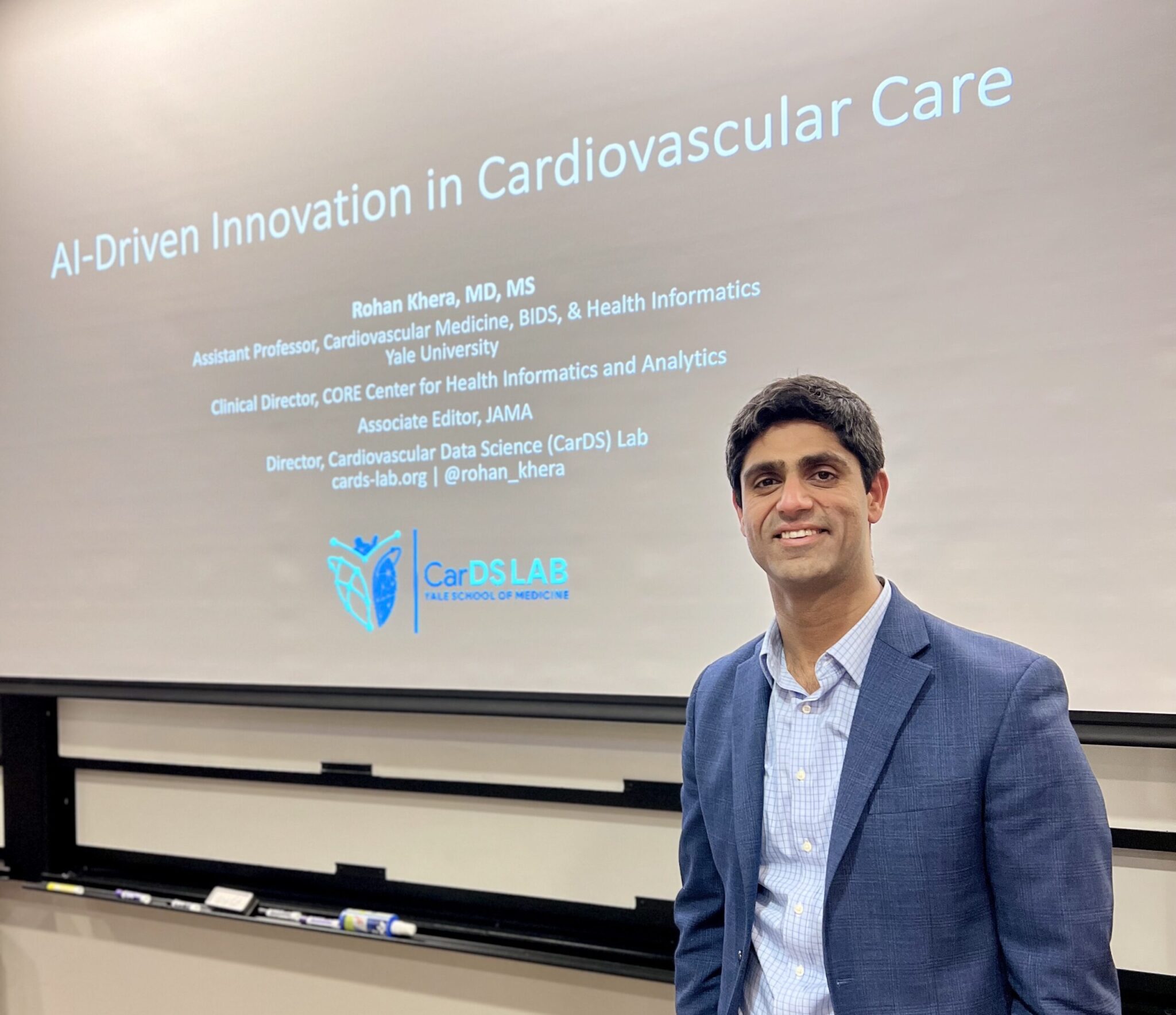AI helps predict adverse outcomes in cardiovascular medicine, Yale study finds
Yale researchers have created a noise-adapted artificial intelligence model that can detect heart disease.

William Zhang, Contributing Photographer
Artificial intelligence can help more accurately detect heart diseases, a new Yale study found.
Researchers developed an AI model that allows wearable devices to more effectively detect left ventricular systolic dysfunction, a heart condition associated with more than an eight-fold increase in heart failure risk. The research team published their model in July.
“There has been amazing development of sensors available on wearable devices,” Rohan Khera, an assistant professor of cardiovascular medicine and a senior author on the paper, wrote to the News. “Given how widespread these devices are, this can transform how we identify people with diseases, especially earlier in their disease course.”
The risk of LVSD can be mitigated through early detection of cardiovascular diseases via an electrocardiogram machine, or ECG, which records the electrical activity of the heart. ECGs can be handheld or wearable as a portable device.
While ECG data from wearables can be a promising screening tool, there is often “noise” — not sound, but rather erroneous data — that obscures the “signal,” which is the useful information.
In this context, noise includes factors such as poor electrode contact with the skin, movement and muscle contraction during the ECG recording and external electrical interference.
Using 385,601 ECGs from the Yale New Haven Hospital between 2015 and 2021, the researchers developed both a standard and noise-adapted AI model. The latter was trained with custom noise recordings in different frequency ranges that emulated real-world noise sources.
They found that the noise-adapted model detected LVSD significantly better.
“This is very impressive work and an excellent demonstration of the power of big clinical data and wearables,” Lawrence Staib, a professor of radiology and biomedical imaging who was not involved in the study, wrote to the News. “Their noise augmentation approach is powerful and the results are impressive. While there is still work to be done, it looks like the hope and promise of wearables is coming to fruition.”
According to the researchers, deep-learning algorithms can help automate the detection of structural heart disorders and their early warning signs, some of which are not the primary health concern of the screening. However, noisy ECG results may hinder the forecasting reliability of AI for detecting LVSD in the real world.
“This paper underlies the importance of developing and testing AI models prior to their deployment in health care,” Jun Deng, a professor of therapeutic radiology, wrote to the News. “[There is an] often-encountered situation where the AI models developed in the lab cannot contextualize the situation and frequently break when dealing with the noisy real-world data different from the data used in training”.
Until now, AI’s ability to diagnose health conditions was worse in real-world wearable ECG data compared to the more ideal clinical settings. These findings contribute to detecting heart conditions like LVSD using wearable devices.
According to Harlan Krumholz, a professor of medicine in cardiology at the School of Medicine, AI detection tools helps patients avoid adverse health events. “The application of this AI to wearable devices will unlock access for patients to actionable information and empower them with meaningful information about their health,” Krumholz wrote the News.
The School of Medicine is located at 333 Cedar St.







